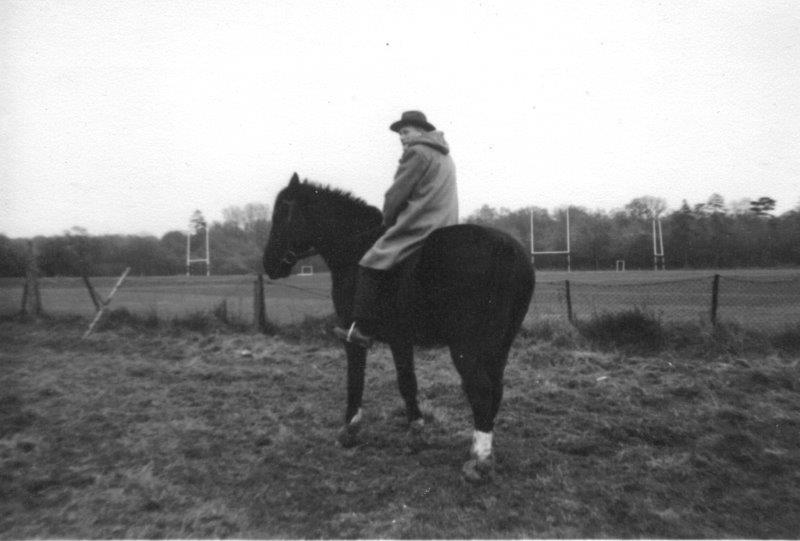Early Days
Like many families whose milk was delivered by horse and cart, our founders, the Walbancke family, wondered what was to become of the horse when she was too old to work. They like most of the dairy’s customers imagined green fields and a happy retirement awaited, but they were horrified to discover that Effie, who had served the milk company faithfully for many years, would only be rewarded with euthanasia. Distressed, they contacted the Chairman of the dairy who gave them the elderly horse. Effie had many years of retirement, and died eventually at the ripe old age of thirty-five, much loved by all.
This Was How It All Began
During mechanisation in the nineteen sixties they saved many dairy and bakery horses. Effie was the only one given to them though, they had to earn hard cash to save the others. They never forgot the representative of a large dairy company who charged them by the hundredweight for the horses as though they were already meat. The Walbancke family joined forces with a horse protection society and worked with them for several years until eventually they resigned to found their own group, now the Horse Rescue Fund.
The Horse Rescue Fund
The fund was formed during the height of the shipment of Irish horses in appalling conditions to the continent for meat. They campaigned tirelessly to stop this hell trip for horses until, during one winter, fifty-nine dead Irish horses were washed ashore on the coast of Pembroke causing a public outcry that eventually helped put a virtual end to the trade at that time. The fund decided to buy as many horses as they could, and bring them home to safety in England. The first was ‘Robbie’ a coalman’s horse in Dublin whose stable was to be demolished and whose owner was desperately anxious about the fate of his beautiful horse. The cheque arrived in Dublin just in time to save him from the one-way trip. The last of these horses was named ‘Theano’ after the last official ship that carried horses for slaughter. He was snatched from his fate with two others as they stood on the dock at Dublin.

Our First Sanctuary
At the beginning of the campaign to save horses the fund had no land or stables of its own other than the average size garden. Therefore horses arriving had to go direct to homes which had been chosen previously. This posed difficulties, for when an adopter decided he or she no longer wanted the horse, having previously pleaded for one, they would return it immediately, often with no warning. One horse was left tied to the gate which at this point it was decided that land and stables were now a necessity.
The Walbanckes were able to rent a field adjacent to their home, and this formed the base of their operations. An army mess hut was bought at auction and erected on a chalk base, then divided into stables. A store was added later for hay and to house the carriage they used to collect items for fund raising. A few years later a friend built two more stables in his spare time voluntarily, they were like log cabins and made out of telegraph poles. It took him eight months! They now had stabling for seven horses and eight acres of paddocks with shelters.
The Walbanckes were always aware that the land was rented, and possibly their tenure could prove unsecure. So, with the responsibility of a growing number of horses, both at home and out in loan homes and with his retirement looming Mr. Walbancke decided to purchase, from his own personal income, a cottage and land in Suffolk, to be used as a rescue centre. English cottage was a typical old Suffolk house, about three hundred years old, set back on a large common. There were no stables, just some pig sties, so builders were employed to build a range of stables and a harness room – all funded by money raised from the annual sale of Christmas cards and bazaars. This time the stables were erected on a concrete base in a matter of days rather than the months of back breaking work that went into the previous stables! Later the pig sties were converted into three pony stables and another part of the building into a feed store. Over the years more fund raising purchased smart post and rail dividing fences and shelters for the paddocks.
Causes For Concern
Over the years the fund has rescued many, many horses, ponies and donkeys from ill treatment, slaughter and neglect. When they are fit and healthy, they are placed on loan in approved homes – they are never sold. The general public imagine Great Britain to be an animal loving country, which is probably true as far as the man in the street is concerned, but the amount of cruelty and neglect many horses still have to endure is almost beyond belief. This is sometimes due to ignorance rather than deliberate cruelty. There are campaigns running and legislation being drafted today in Parliament to stop the transport of horses abroad for slaughter. The Walbanckes were pioneers of their day but there are still many cases of neglect and cruelty happening so please help us to continue their work and help as many horses, ponies and donkeys as we can.

